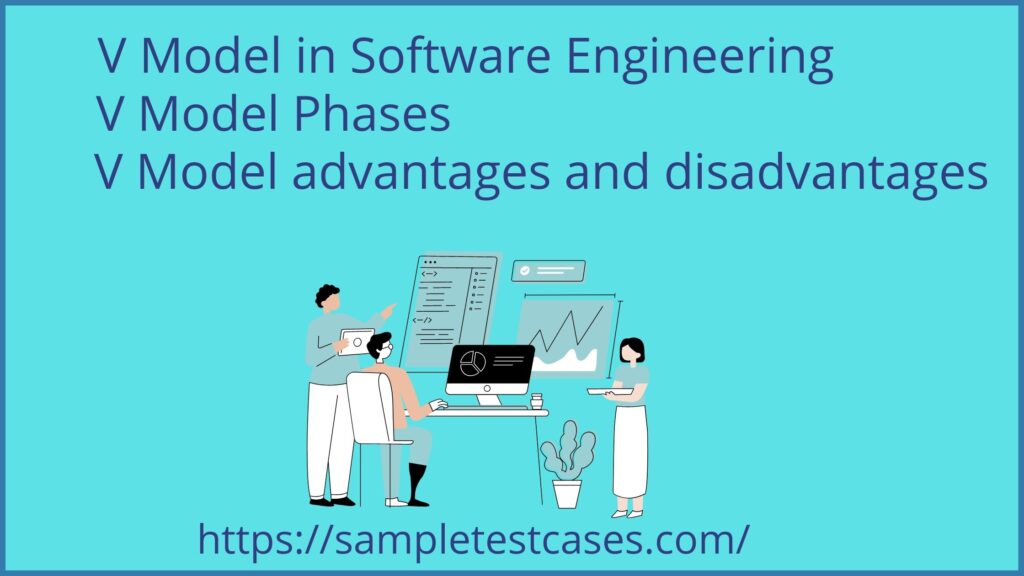SDLC (Software Development Life Cycle) V model means verification and validation model. V shaped model life cycle has sequential execution process. V model in software testing, each phase must be done before starting next phase. It is a step-by-step procedure to develop software and overcome problems compared to the waterfall model.
V model testing more useful compared to waterfall model. In waterfall model testing is starts after the development phase and in V model testing starts parallel during the development phase.
V-model phases
Verification :
Verification means verifying customer requirements specification, business requirements specification, software requirements specification, high-level design, and low-level design accordingly as per requirement specification or not.
The main focus of verification is that “Are we building products right?”
Requirement Analysis
In this phase, IT people collects the requirements from the customers and starts analysis and planning based on the requirements. In the development of software, the requirement Analysis phase considered a very essential phase, because if we do not know the requirement of the customer, then how can we develop a software products.
System Design
As we know when all the requirements of the customer come to us to develop the software, we create a design of the software according to the customer’s requirement and in designing that software, whatever hardware and other components it uses, they become a list of them, we can know how much it has cost to build the software.
Architectural Design
We also call this phase High-Level Design. In this phase, We are more concentrate on the the architectural specification of product.
This is why we call this phase high-level design, how this software will work and how it will link internally or externally with other components of the software.
Module Design
Module Design also called low-level design because the internal design of all modules of software in this phase is Specify for any software it’s very important. All modules of the software should be designed according to the architecture of the Software as we mentioned that testing also done with development in the V-model.
Coding phase
Design for the design of software designed according to customer requirement in coding phase and no errors in coding come and the program should be properly worked. For this, the code is revisited repeatedly as we know the programming does not cause program access due to small errors, so in this phase, the developer has to It often takes longer.

Validation :
Validation means testing any functionality of any application by executing test cases called validation. So the main focus of validation is that “Are we building the right product?”
Unit Testing
In this phase, testing of the any software product is planned in parallel with a development stage. This phase is important because when UTP(Unit Test Plans) execute during this phase, most of the bugs are eliminate at code level.
Integration Testing
In this phase, The Integration test plan created during the architectural design phase, It executes with Internal modules inside the software, it also checked that all the models are working well and not.
System Testing
In this phase, System Test Plans created during system testing phase. System testing is different from the Unit testing and Integration testing. System testing is mostly focus on the software product and it is ensure that it’s work as client’s expectation or not. All functionality should be worked according to the customer.
Acceptance Testing
In the acceptance testing phase, UAT Test plan created during this phase and testing done as per the requirement analysis phase. Test Engineers team test the application and check that functionality works as expected or not and product met as customer’s requirements or not.
This phase also tested in this software and compatible with other systems and it has many other types of issues removed such as Load time, Performance, etc
V model advantages and disadvantages :
V- model advantages :
- It is simple and easy to use.
- It has major changes to find defects in the early stage.
- In this phase, test planning and test designing like test activities perform before the coding.
- It suited for small projects where requirements not complex.
- It is a high discipline model to develop software.
V- model disadvantages :
- The risk is high and unpredictable.
- This model does not suite for complex projects.
- It is difficult to go back to the previous stage after completing the testing phase.
- It is a poor model for long and ongoing projects.
Use of V-Model :
It mostly use for small projects and medium-size projects where customers’ requirements cleared.
Conclusion :
V model testing is starts parallel so we can find defects in the early stages so in this way v shape model used for the software industry for software development.
Learn more : Manual Testing Tutorial
